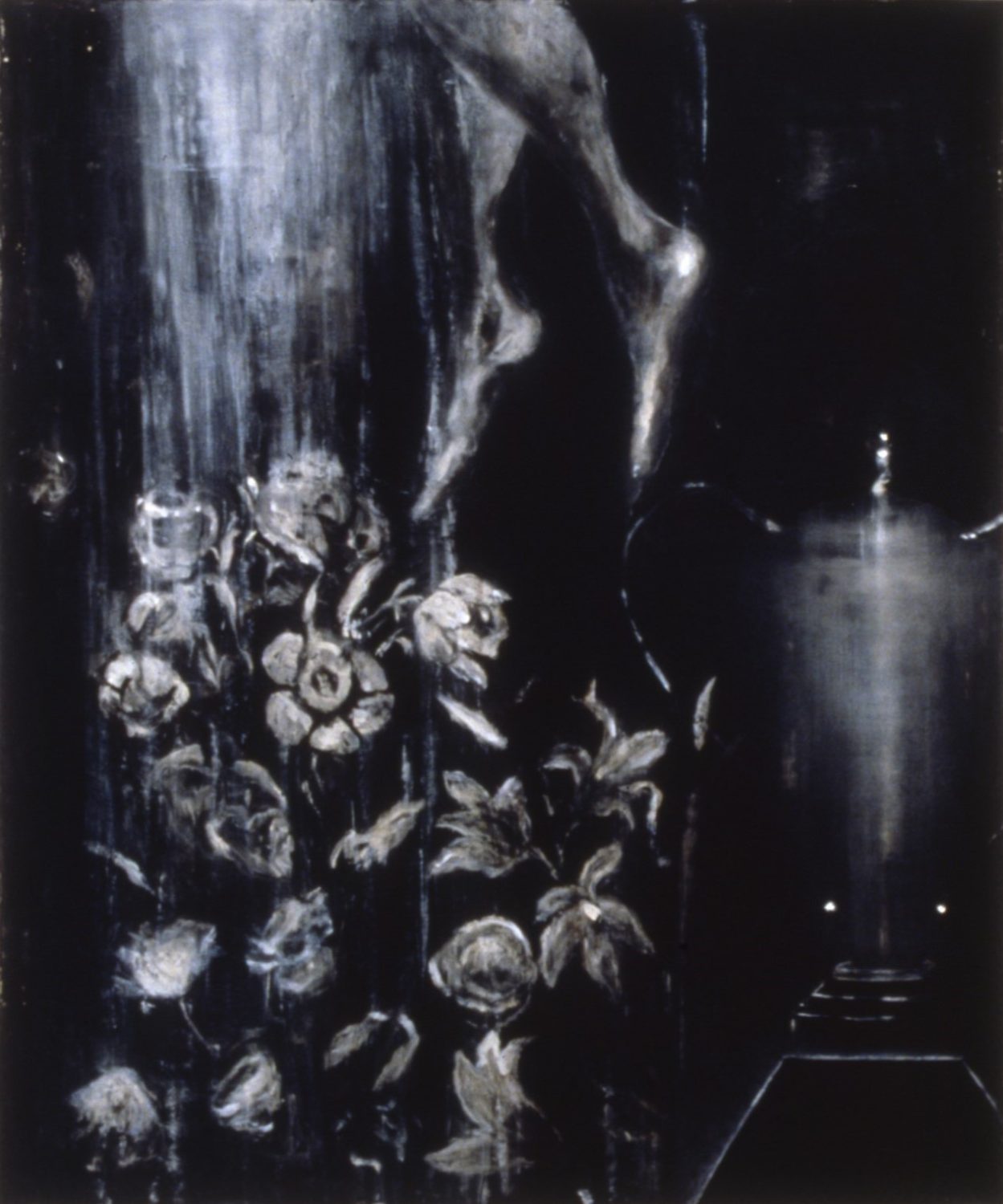 For much of the 1990s, I had a magazine subscription to Art in America. Occasionally, my favorite part of an issue would be the monthly advertisement for recently-published art books that could be purchased at a slight discount through the magazine itself. If memory serves, there would be four different ads a year, one for each season. It was in one of these ads that I first saw the Ross Bleckner painting One Day Fever, which appears on the cover of the catalogue to his 1995 Guggenheim retrospective. Even in the tiny reproduction – the photo was not much larger than a couple of postage stamps – the painting was striking. It captured my attention and for weeks I kept flipping back to the ad. I was already somewhat familiar with Bleckner’s work, which, since the early ’80s, I had occasionally read about and admired in Art in America and other magazines. On the strength of its cover image and my rudimentary knowledge of his work, I decided to take the plunge and ordered the catalogue through a local independent bookstore I frequented. Apparently one can judge a book….
For much of the 1990s, I had a magazine subscription to Art in America. Occasionally, my favorite part of an issue would be the monthly advertisement for recently-published art books that could be purchased at a slight discount through the magazine itself. If memory serves, there would be four different ads a year, one for each season. It was in one of these ads that I first saw the Ross Bleckner painting One Day Fever, which appears on the cover of the catalogue to his 1995 Guggenheim retrospective. Even in the tiny reproduction – the photo was not much larger than a couple of postage stamps – the painting was striking. It captured my attention and for weeks I kept flipping back to the ad. I was already somewhat familiar with Bleckner’s work, which, since the early ’80s, I had occasionally read about and admired in Art in America and other magazines. On the strength of its cover image and my rudimentary knowledge of his work, I decided to take the plunge and ordered the catalogue through a local independent bookstore I frequented. Apparently one can judge a book….
Bleckner utilizes an ever-expanding set of motifs, but his dark interiors are still among my favorites of his oeuvre. The obscure environment in One Day Fever, as well as those in several other pieces in the catalogue, brought to mind the rooms in many of Francis Bacon’s dark paintings from the 1950s. However, whereas Bacon’s spaces feel airless and claustrophobic, Bleckner’s appear open and expansive – those in the Examined Life series, with chandeliers or other lamp-like objects, often resemble the dance floors of discotheques. The shaft of light coming down on the left side of One Day Fever also recalls Bacon’s ’50s work; it resembles the vertical brushstrokes he used to merge figure and ground and which he referred to as “shuttering.” Despite these similar aspects, Bleckner’s piece no more resembles a Bacon painting than it does El Greco’s Virgin of the Immaculate Conception, a detail from which Bleckner based his composition. Bleckner has obviously studied the vocabularies of a myriad of artists from the past, but the manner in which he employs them is his own.
Bleckner transformed the El Greco angel’s pale, fleshy legs into spectral limbs which float at the top of the scene and are a principle component of his composition. The roses, lilies, and urn, which fill the majority of the picture plane, create the funereal atmosphere which permeated Bleckner’s work of the time. The urn doesn’t even seem to have a physical presence – it appears to be composed completely of light reflected off an object which is no longer present. Although Bleckner’s approach to referencing HIV and AIDS was actually quite oblique, One Day Fever immediately and unmistakably evoked all the issues surrounding that crisis. As far as I know, Bleckner explicitly referred to AIDS in only one piece – 8,122 as of January 1986 – but in the 1980s and ’90s it was impossible to view his paintings of loss and mourning without thinking about the disease.
It’s been almost thirty years since Bleckner’s “mid-career” Guggenheim retrospective, almost thirty years since I became familiar with One Day Fever. I believe seeing the piece for the first time today, out of the context of the times, would be a very different experience, although it continues to embody the gravitas it held then. I admire Bleckner’s compulsion to make work based on his sociopolitical concerns, I admire his need to do so on his own terms, and I admire the paintings themselves, of which I’ve only seen a handful. One Day Fever has not been among them.



